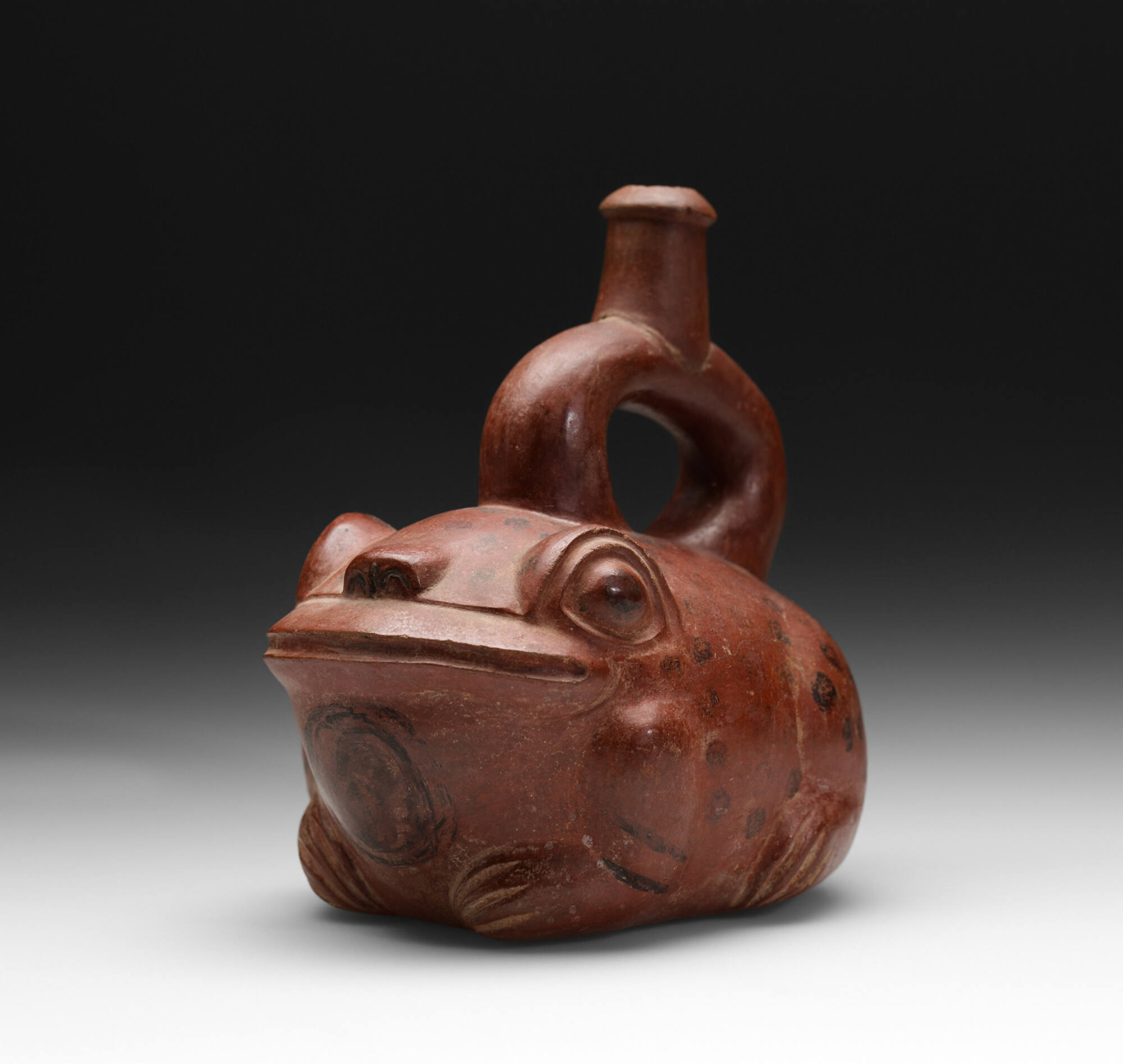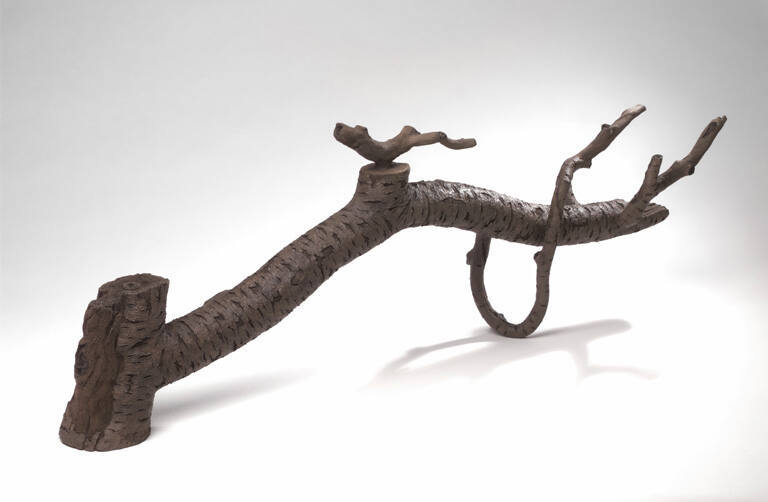
Object Details
Culture
Moche I (Peru)
Date
ca. 400 BC–AD 100
Medium
Earthenware
Dimensions
5 1/2 × 3 3/4 × 1 inches (14 × 9.5 × 2.5 cm)
Credit Line
Gift of Thomas Carroll, PhD 1951
Object
Number
2006.070.387
BRIEF DESCRIPTIONAn effigy vessel is a container that is made in the shape of a person or an animal.(…)
BRIEF DESCRIPTIONAn effigy vessel is a container that is made in the shape of a person or an animal. Moche potters made highly realistic effigy vessels; this one is in the form of a frog.WHERE WAS IT MADE?This vessel comes from the north coastal region of what is now Peru.HOW WAS IT MADE?The Moche made many of their ceramics using two-part press molds, a technique that enabled potters to make multiple pots of uniform design. First an original form was made from clay. After creating the mold (also ceramic) from this original, clay would be pressed into each half, and then later joined together. Sometimes hand modeling or coiling would also be utilized, and more than one technique could be used to produce a single pot.The clay used to make these vessels is known as terracotta, and the presence of iron in the clay gives it the reddish-brown hue. When the ceramics were fired in shallow earthen pits, the presence of heat and oxygen would oxidize the iron in the clay, enhancing the colors of brown, red and orange. This vessel has been painted with a deep red slip (a mixture of water and clay high in iron content) and a black slip was used to add spots and other decorative designs. Once the slip dried, but before the vessel was fired in an earthen pit, it was burnished to give the surface a shiny appearance.HOW WAS IT USED?Bottles of this stirrup-spout type may have been used to carry and serve liquids, since the narrow-necked bottle shape would have reduced losses from accidental spills and evaporation. Although water is vital in desert environments such as those found in many parts of the Andes, recent analyses of residues from Peruvian bottles and jars suggest that most of them were used to serve corn (maize) beer or chicha. Chicha was both an everyday beverage, made in households for family consumption, and an essential element in ritual and social interactions.WHY DOES IT LOOK LIKE THIS?Notice how highly realistic this frog vessel is, both in the form and the painted black spots on its body. Frogs symbolize the opposition between air and water, between light and dark, between dry and wet; they are a fertility symbol among the Tairona, a pre-Columbian cultural group that was located in present day Colombia. The Moche made many vessels in animal form. To see a few other examples in the Johnson Museum’s collection, search for object numbers 56.187, 56.233, and 2006.070.393 in the keyword search box.ABOUT THE MOCHE CULTURE:Arguably one of the finest technological manifestations of the pre-Columbian potter’s art, Moche ceramics have charmed generations of archaeologists and collectors with their finely executed painting and exquisite sculptural forms. Moche (formerly known as Mochica) pottery is characterized by red painting executed on a white or cream-colored slip ground. Moche stirrup-spout bottles represent a wide variety of sculptural forms, including human portraits, animal effigies, domestic scenes, or graphic human sexuality. The core area of Moche cultural influence extended from Lambayeque in the north to Nepeña in the south, and likely reflects militaristic conquest and political control by a state-level polity centered in the Moche Valley. The Moche united many coastal groups, built and controlled extensive irrigation networks, and produced ceramic vessels using molds, a technological innovation which enabled the production of vast numbers of highly detailed ceramics, including portrait head vessels so finely detailed that individual faces can be recognized. Fineline paintings depict detailed, elaborate scenes now thought to be part of the “warrior sacrifice” or “presentation theme” story central to the Moche religion. Moche metalwork also achieved remarkable levels of sophistication, with precious stones inlaid in ornaments made of copper, silver, and gold alloys.












